Maria Yoon is getting married for the 53rd time this Saturday, with the groom being Howard Chen (陳豪爾), an affluent Taiwanese man who died in June 2001.
Yoon arrived in Taiwan from New York on Tuesday and will be spending this week rehearsing and making preparations for a ghost wedding, which includes making pineapple cakes and trying to procure a live chicken.
Ghost marriages in Taiwan mostly involve men marrying female ghosts, since unmarried women are not included on a husband’s family registry and have no descendants to take care of her spirit in the afterlife. The woman’s family finds her a groom so her spirit can be at peace.
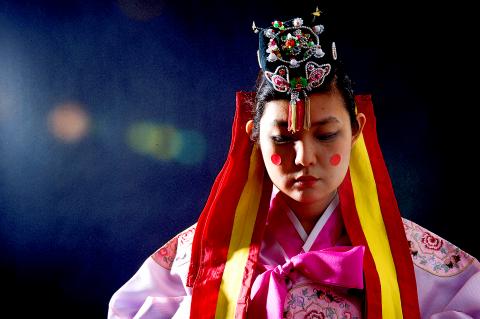
Photo courtesy of Maria Yoon
Held at Yunshan Temple (雲山巖) in New Taipei City’s Sijhih District (汐止) and conducted by a Taoist priest, the ceremonial rituals will be as authentic as possible — except for Chen, who is a figment of Yoon’s imagination because she wasn’t able to find a real dead person to marry.
Yoon, a first-generation Korean-American performance artist, is better known as Maria the Korean Bride.
In response to familial pressure to wed, Yoon donned her Korean wedding hanbok and spent nine years getting married to men, women, animals and inanimate objects in all 50 US states and two of its territories. Six years after her last wedding in New York, she hopes to close out the project in Asia through ghost marriages in Taiwan and China. Like her previous effort, she will be turning the experience into a documentary.
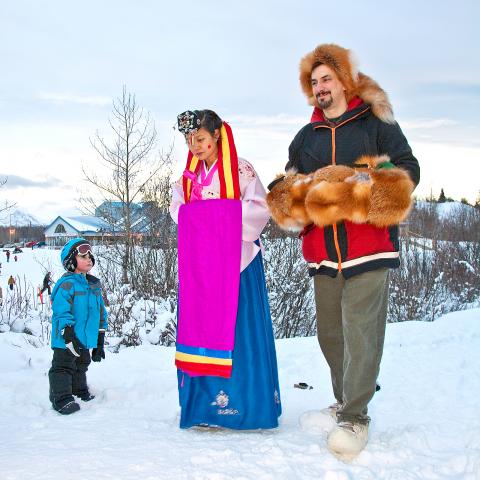
Photo courtesy of Maria Yoon
“After marrying in 50 states in America, I make a full circle marrying the ghosts in Asia where my entire family is from. It’s like the circle of life,” she says.
In addition to continuing the theme of exploring the institution of marriage and what it means in different cultures, Yoon was especially fascinated by the idea of caring for someone even after their death.
“By uniting the departed with someone as a couple, it brings comfort to the living,” she says. “I think that’s the core here. Love still matters after you’re dead.”

Photo courtesy of Maria Yoon
Attendees must RSVP through the event’s Facebook page, and Yoon is also looking for volunteers to serve as her family members.
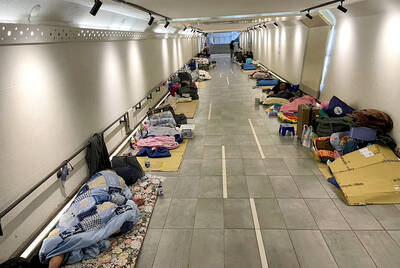
From the last quarter of 2001, research shows that real housing prices nearly tripled (before a 2012 law to enforce housing price registration, researchers tracked a few large real estate firms to estimate housing price behavior). Incomes have not kept pace, though this has not yet led to defaults. Instead, an increasing chunk of household income goes to mortgage payments. This suggests that even if incomes grow, the mortgage squeeze will still make voters feel like their paychecks won’t stretch to cover expenses. The housing price rises in the last two decades are now driving higher rents. The rental market
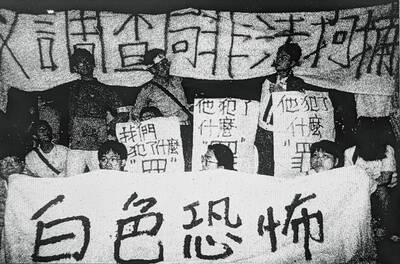
July 21 to July 27 If the “Taiwan Independence Association” (TIA) incident had happened four years earlier, it probably wouldn’t have caused much of an uproar. But the arrest of four young suspected independence activists in the early hours of May 9, 1991, sparked outrage, with many denouncing it as a return to the White Terror — a time when anyone could be detained for suspected seditious activity. Not only had martial law been lifted in 1987, just days earlier on May 1, the government had abolished the Temporary Provisions Effective During the Period of National Mobilization for Suppression of the Communist
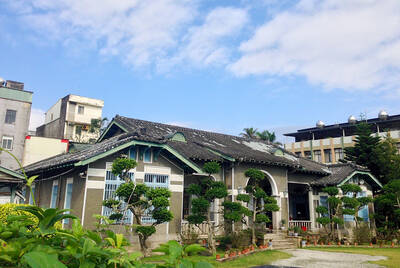
When life gives you trees, make paper. That was one of the first thoughts to cross my mind as I explored what’s now called Chung Hsing Cultural and Creative Park (中興文化創意園區, CHCCP) in Yilan County’s Wujie Township (五結). Northeast Taiwan boasts an abundance of forest resources. Yilan County is home to both Taipingshan National Forest Recreation Area (太平山國家森林遊樂區) — by far the largest reserve of its kind in the country — and Makauy Ecological Park (馬告生態園區, see “Towering trees and a tranquil lake” in the May 13, 2022 edition of this newspaper). So it was inevitable that industrial-scale paper making would
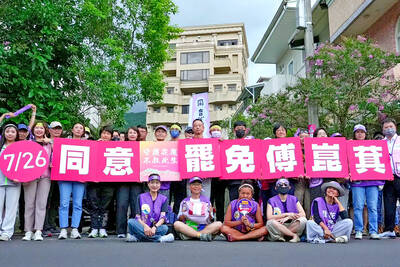
Hualien lawmaker Fu Kun-chi (傅?萁) is the prime target of the recall campaigns. They want to bring him and everything he represents crashing down. This is an existential test for Fu and a critical symbolic test for the campaigners. It is also a crucial test for both the Chinese Nationalist Party (KMT) and a personal one for party Chairman Eric Chu (朱立倫). Why is Fu such a lightning rod? LOCAL LORD At the dawn of the 2020s, Fu, running as an independent candidate, beat incumbent Democratic Progressive Party (DPP) lawmaker Hsiao Bi-khim (蕭美琴) and a KMT candidate to return to the legislature representing